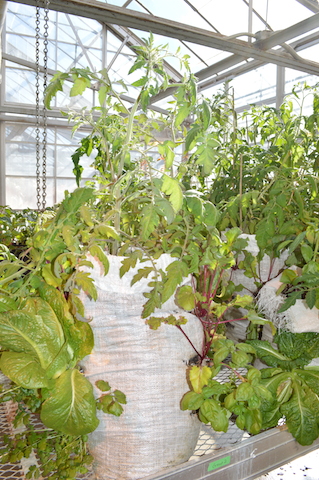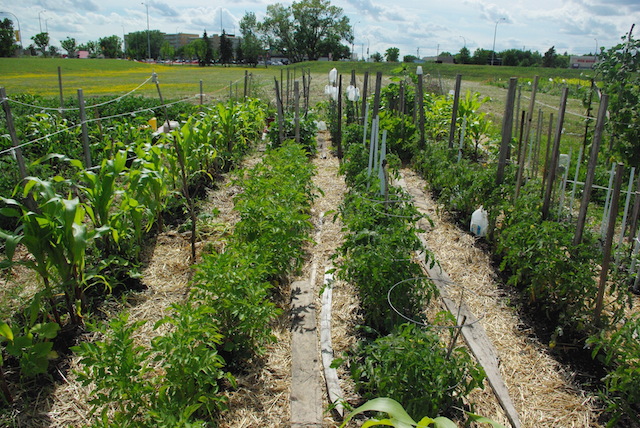
Students -- mostly city slickers -- grow three varieties of tomatoes, jalapeno, bell peppers, beets, lettuce and herbs in new course
Urban agriculture takes root at U of M
For many, the term urban agriculture conjures up cosy backyard gardens or patio containers of tomatoes and herbs.
What students in the course Urban Agriculture (PLNT 1000), offered by the Faculty of Agricultural and Food Sciences, quickly discovered is that an examination of small-scale agriculture in urban settings opens up larger discussions about global food security, environmental health and community development.
The University 1 level course was envisioned and designed by Plant Science professor Anita Brûlé-Babel four years ago as a way for students to explore urban food production. The course covers the principles of vegetable, fruit and herb production, landscape plants, and utilization of natural systems for composting, water management and reduced pesticide use.
Course instructor Tyler Guerrieri noted that of the 23 students in this year’s course, most were urban and many were undeclared first-year students.
“It was telling and inspiring that mostly non-agricultural students enrolled. The course brings together people with new perspectives and interests to discuss what roles cities play in feeding themselves,” he said.
Although the course doesn’t technically have a lab section, Guerrieri juggled class time to allow students to get their hands dirty, so to speak.
“The course didn’t begin until January but we started some seeds in December so that students could spend some time in the greenhouses. During some of our classes, they transplanted and watered plants, released beneficial insects to control pests, and as crops began to ripen, they harvested them and took them home.”
The students grew three varieties of tomatoes, jalapeno and bell peppers, beets, lettuce and herbs. In addition to regular pots, the students replicated the “Garden in a Sack” project that had been successfully implemented in Kibera, one of the most impoverished slums in Nairobi, Kenya. In that program, tall bags of pre-mixed soil along with seeds or seedlings were provided to residents, who planted them at intervals up the sides and tops of the bags.
“Essentially, you get six or seven square feet of growing space in two square feet footprint,” said Guerrieri.
The project not only yielded an excellent crop but engaged students in discussions about property rights, food security and income generation for the economically disadvantaged.
One of this year’s students had a particular interest in gardening. Tammy Junghans is an Arts student with interests in legal rights and justice issues. She is also involved in the UMSU Campus Garden, a student-led initiative that incorporates sustainable agricultural principles in their large garden located on the west side of campus.
Junghans said she was looking for a course related to her interests when she discovered Urban Agriculture.
“Food security was on my radar as a justice issue, and food insecurity here in Canada is a topic that I find very interesting,” she said.
Through her work with another student group, Segue, Junghans has been involved in social justice issues. She is currently participating in an investigation into human trafficking in Romania with ERDO or Emergency Relief & Development Overseas, an aid organization that focuses on food assistance. Part of the investigation includes the development of greenhouses on the property of a shelter that focuses on the rescue and rehabilitation of girls as young as 13 who are being trafficked for the purposes of sexual exploitation.
“As a result, the shelter will be able to grow their own food year round, help the girls develop marketable job skills and facilitate the healing and rehabilitation process,” she said.
As for the university garden, Junghans says the knowledge gained through the Urban Agriculture course will be put to good use.
“Understanding urban soil, for example, helps community gardeners replenish that soil and continue to produce food,” she said. “Gardening in the community – any community – is good for all of us.”









Pingback: Urban agriculture takes root at University of Manitoba — City Farmer News
What’s really cool is that we are putting the first greenhouse on the shelter property THIS SPRING!! We are taking a team of 6 students to accomplish this task and see it through.